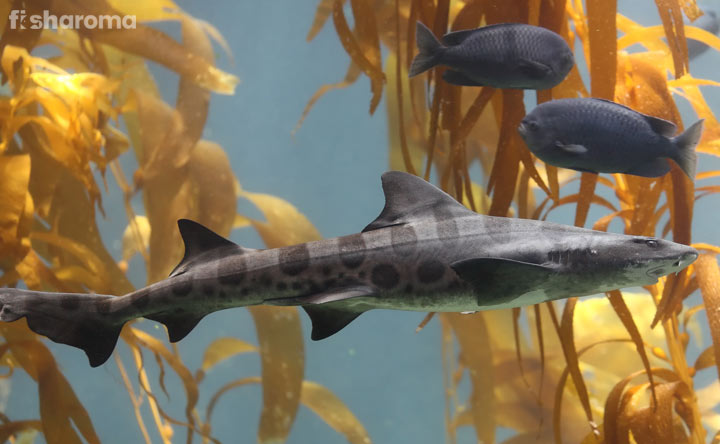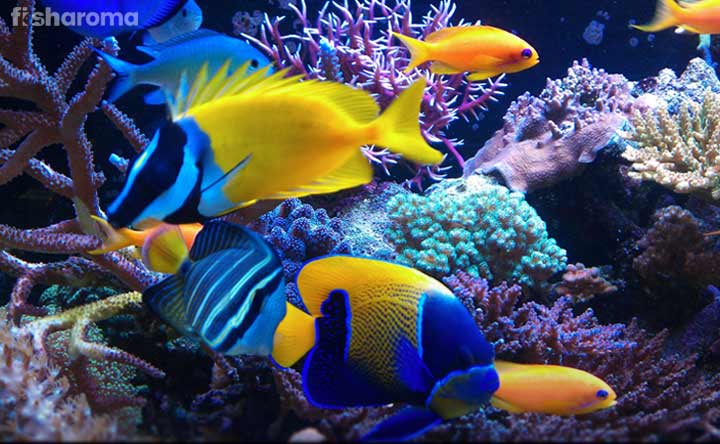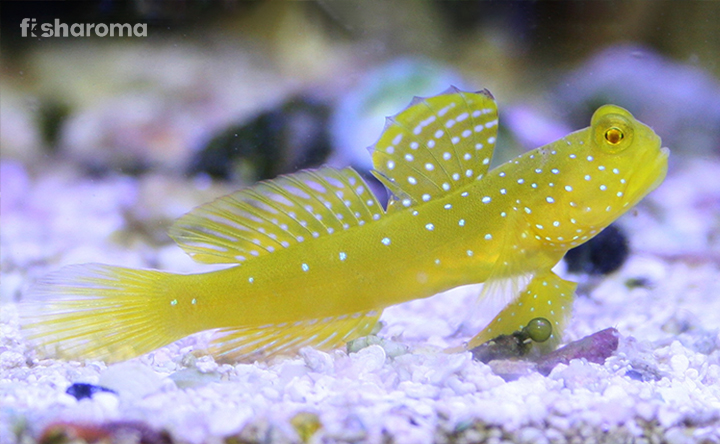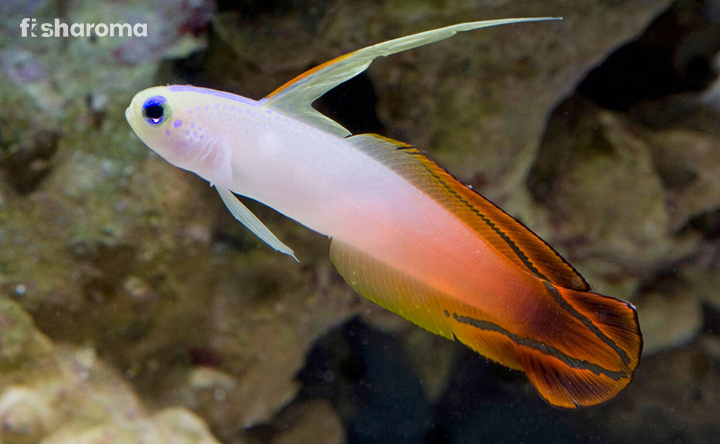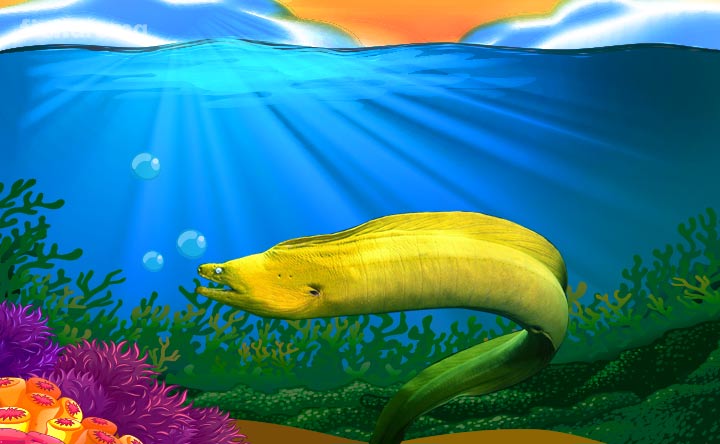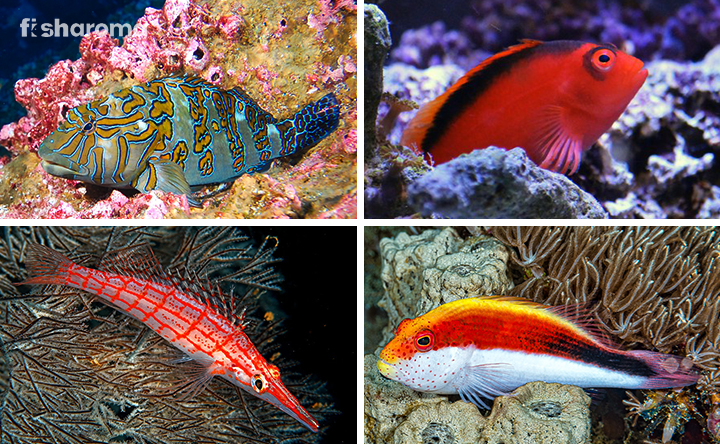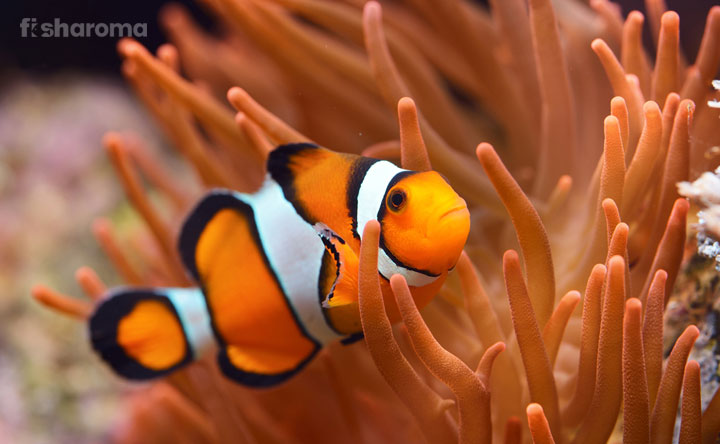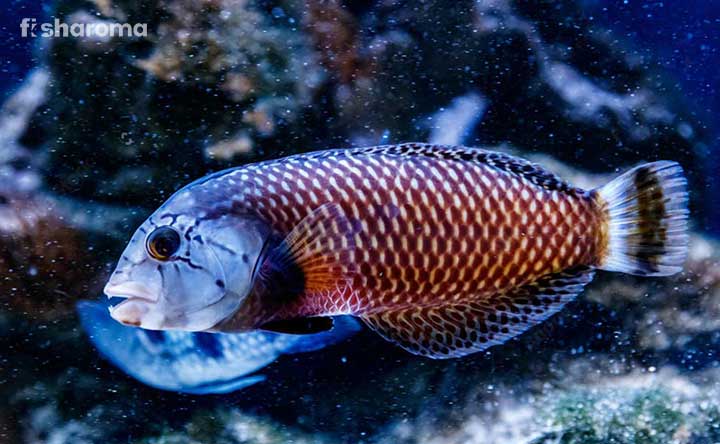Fire Shrimp: Exploring This Red Beauty
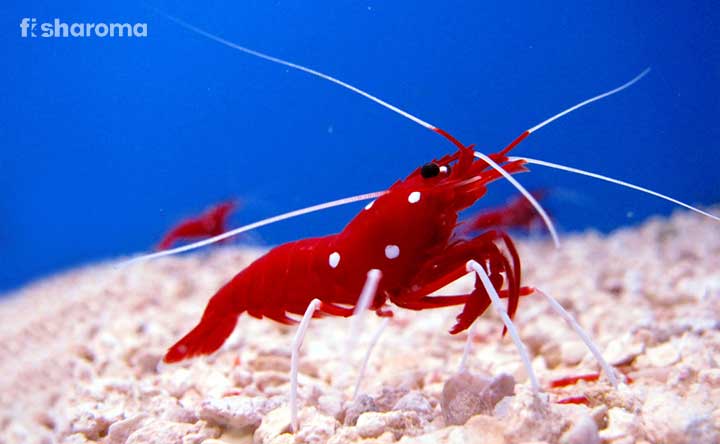
Being perfectly suitable in nano aquariums, Fire Shrimps are the most-coveted invertebrates. With their fascinating colour and amazing grace, these saltwater Shrimps are great for a home aquarium.
Reportedly seen to prey on large and small coral polyps, these invertebrates have an admirable cleaning procedure. They nip on dead scales of other fishes; which got them the name Scarlet Cleaner Shrimp. Dwelling typically at 20-30 meters deep of ocean water, these Shrimps prefer to reside in the bottom of the aquarium. Fire Shrimps are nocturnal in nature as they prefer to scavenge under a rock ledge at night.
However, keeping these Blood Red Fire Shrimps is quite easy as they are peaceful. Though mildly aggressive on being kept with too many of the same species, these fishes generally keep low and quietly lay on reefs during the day. Having said this, we will take you through a complete care guide of Fire Shrimps, in order to provide you with the necessary information in keeping them.
Key Specifications of Fire Shrimp
Before jumping into details of Fire Shrimp, let us quickly look into the key specifications of the said species.
| Scientific Name | Lysmata debelius |
| Origin | Wilds of Pacific Ocean |
| Lifespan | 2 years |
| Colours | Scarlet, Bright red with white spots |
| Temperament | Peaceful or a little bit aggressive |
| Size | 1.5-2 inches |
| Diet | Omnivorous |
| Family | Hippolytidae |
| Compatibility | Small peaceful saltwater fishes |
| Tank Size | 30 Gallon |
| Care Level | Easy |
Overview
Being in the Hippolytidae family, these Red Fire Shrimps are an upper version of typical Cherry Shrimp. They are bred in a selective manner in order to obtain a redder version of Cherry Shrimps through the generation of farming. This unique procedure gives them a strikingly vibrant red colour, which resembles a fire in your tank; hence the name-Red Fire Shrimp.
These peaceful invertebrates are quite compatible with other peaceful fish species, provided all of them have scales. This allows obtaining nourishment from dead scales as they nibble on scales of other fishes.
These insects have many names which include, Red Cherry Shrimps, Scarlet Cleaner Shrimps and Blood Red Fire Shrimps. Moreover, the Shrimps provide you with 2 years of friendship by sustaining quiet easy caregiving.
Origin and Habitat of Fire Shrimp
These brilliantly glossy insects are native to Bali, Indonesia, the Eastern Indian Ocean and the Pacific Ocean, wherein, their species are found as far as the Maldives. With a business aim, these insects are also exported from Sri Lanka.
These starry coloured insects are very accustomed to coral reefs and are generally living in large or small stoned coral polyps. Their natural habitat consists of saltwater, which demands the same ambience when you put them in aquariums also. These Shrimps are not so current friendly; hence, dwell in moderately flowing water.
Appearance of Fire Shrimp
These beautiful small insects grow up to a small length and are amazingly designed in scarlet-red colour. Like any other invertebrate shrimp, they have two long antennae that remain stick to their head. These antennae work as a sensor; which alerts them of any other fishes that come along in their way. With the help of these, they can even sense any form of vibration within the water.
Moreover, these Shrimps have two long legs, which add to their beauty by providing a distinctive look.
Size
A completely matured fish measures up to 1.5-2 inches and peacefully reside within a small area in your saltwater tank. With an extra-large antenna over the head, they look a bit elongated in size.
Colour
Fire Shrimp is bright red coloured with white spots, however, they are also seen in varied scarlet colours. You might notice their colour fading slightly if they are in a stage of moulting. They have, like many invertebrates, an exoskeleton that provides protection to them. While in good health, adult Fire Shrimps moult every three to four weeks, whereas, young ones moult every one week. This moulting causes fading of their colouration during a certain period of time.
Behaviour of Fire Shrimp
Keeping itself completely in the ledge of rocks during the daytime, these Shrimps enjoy being nocturnal. These are quiet and tranquil, with their tendency to venture out at night for food. Moreover, they are capable of getting trained for recognizing their food, which further enables you to understand their feeding requirement.
With a fellow Fire Shrimp in its tank, your pet will feel happy, however, too many in a small tank might threaten their territory and turn them aggressive. Keeping corals in their tank might also turn them into hostile insects, as they try to eat away all the corals.
Lifespan of Fire Shrimp
The average lifespan of Blood Red Shrimps is 1.5-2.5 years, wherein under ideal captivity they can live up to more than 2.5 years. However, according to a few owners, their pets have lived for more than five years; which suggests, with zero predators and the most sought-after tank condition, these Shrimps can also live for more than their average lifespan.
Diet of Fire Shrimp
Placing food in their tank during the daytime might take them out from their hides. However, with all your possible supply of food, these insects don’t really rely on you for satisfying their own nutritional needs. They mainly nibble scales of other companion fishes and take the full nourishment from dead scales and excess skin. They are also capable of removing ectoparasites from their tank mates and intake them. There works an inter-dependency within your tank where these fishes approach the Shrimps to get rid of their dead scales. This has earned them the name of cleaner fish.
They mainly depend on meaty-protein and uneaten foods of your fishes. This includes freeze-dried, live or frozen foods, flakes, brine, soft pellets and Mysis Shrimp.
Tank Requirements for Fire Shrimp
Tank requirements are very important for the species where they can happily thrive. In order to know more about their ideal tank conditions, keep reading the guidance!
Tank Size
With an average size of 1.5-2 inches, these small Shrimps can easily get fitted within a tank of 30 gallons. They need enough space to hide, hence the tank size is generally kept larger.
Tank Lid
It is very important to keep a tight tank lid so that no other pets can plunge over the water. This also resists any waste or dirt from accumulating in the tank walls and water.
Substrate
Fire Shrimps are not very engaging towards the thin substrate and find themselves comfortable in a thick layer of substrates within a planted tank. They prefer sand with many rocky caves and logs projecting out so that they can hide.
Ornaments
These insects are completely nocturnal and prefer to hide out during the day. Moreover, they like to keep themselves under cover, which demands deep rocks, caves, crevices and plant sheds within the aquarium.
Try to create a number of fun-filled activities for them, so that they can hide out with their fellow Shrimps, when at play.
However, the holes of rocks must be enlarged so that their antennae don’t get entangled there while they swim out.
Filter
Since they prefer hiding out, it is not recommended to keep high water current as the water movement would take them out from hides with force. Their tank must resemble their natural habitat where they prefer to remain concealed within sheds.
The filter must have a battery backup booster so that when you use wire filters, a power cut can’t stop the water from getting filtration.
Presence of Flora
Plants are the most important needs for these Shrimps since they can find a place to keep themselves covered. The best plants for keeping in your Fire-Shrimp tank are Water Sprite, Sale and Mainam.
However, avoid using any coloured plants as synthetic, toxic colours would harm their health.
You are recommended not to put any live coral as Fire Shrimps have a propensity to nibble away corals, which will eventually damage the whole thing.
Lighting
These Shrimps like a dim light and will escape under hides if there is any bright light. This is why they prefer night light than day.
Cleaning Method
In order to keep your tank clean, you must perform the cleaning procedure once a month. Frequent cleaning of your tank keeps away the dirt from getting accumulated inside the aquarium.
Use any soft cloth dipped in water and gently rub the walls of the tank to scrape away the unwanted dirt and dust. Don’t use any bleach or soap as the residue harm the insects.
As you put the tank under the cleaning procedure, you must keep the invertebrates in a separate bowl with the same water parameter.
Water Parameters for Fire Shrimp
Water is the most important parameter for any fish or even invertebrate, which demands a few important aspects to be maintained.
Water Temperature
These Fire Shrimps are not that fussy about the type of water, however, they prefer generally warm water. Coldwater becomes irritating for them as they are used to slightly warmer temperatures. You must keep the water temperature within 28 Degrees Celsius, wherein an increase up to 30 Degrees Celsius can lead to the untimely death of your pet.
pH Level
The desired pH level for your pet Fire Shrimp is kept neutral, where it generally varies from 7.0-7.5.
Hardness
These insects don’t like too much hard water, however, they are not particularly preferable towards any hardness or softness of water. They just don’t do well with any kind of ammonia or nitrate.
You are recommended to keep the carbonate water hardness between 3-15 dKH and general hardness between 4-8 dGH.
Replacement Method
It is imperative for the aquarist to change water on a frequent basis so that the health of your pets remain safe. In order to perform a safe replacement procedure, you need to change the water on a weekly basis, where you can replace 20 per cent every week or 40 per cent every month.
Do not remove the whole water at one go, as this will remove the beneficial bacteria and algae important for the healthy living of your pet.
Compatibility of Fire Shrimp
The Fire Shrimp, being peaceful, can live with other peaceful fishes. They generally prefer nibbling away the dead scales of other fishes and hence, fishes with scales are most preferable for them to dwell with. They intake the whole nourishment from these scales.
As they are nocturnal it is good to keep them with nocturnal species of fishes for easing their feeding process. If you keep fishes that dwell in bright daylight and slip away at night, your pet Shrimp might not get enough food. Preferably you can keep fish with notorious susception to parasites, like Blue Hippo Tang.
Moreover, it is noteworthy that keeping larger marine fishes will lead them to entirely gulp the Shrimp.
Tank Mates
| Suitable Tank Mates | Unsuitable Tank Mates |
| Emerald Dwarf Rasboras | Hawkfish |
| Celestial Danios | Marine and large Tetras or any other species of Shrimp that are larger in size. This makes the Fire Shrimp aggressive, as they feel to be under attacks |
Breeding of Fire Shrimp
Breeding turns out to be extremely unusual as the males and females are completely non-identical. The most exciting fact about your pet Fire Shrimp is that, being a Shrimp species it is hermaphrodite; they have both female and male reproductive organs.
However, with desired tank conditions, these species find themselves quite comfortable in breeding while in captivity. Make sure there is hardly any interference in the aquarium as they opt for breeding.
Your Fire Red Shrimp has a capacity to produce 20-30 eggs at one go, which will hatch within 2-3 weeks. In Shrimp breeding, the concept of survival of the fittest works immensely, as very few of the off-springs live and others die.
Diseases and Treatment of Fire Shrimp
Notably, no such disease has been reported, while a few leeches or tiny white worms might get attached to their shells. These cannot be termed as diseases, as they are not harmful to the Fire Shrimps. A few bacterial diseases might have been observed wherein proper maintenance of water quality will be enough to resist the infection.
Summary
Keeping Fire Shrimp in your tank keeps your aqua-pet residence clean. These Shrimps mainly feed on dead scales of other fishes along with being an expert algae grazers. With little maintenance needed, these Shrimps are a good pick for your aquarium vibrancy.
With their readily breeding capacity, they can be increasingly improved in population. However, it is of utmost importance that you provide immediate feeding to the off-springs in order to resist mortality before metamorphosis.
Add a Red Fire to your tank! Follow our guide to keep them healthy.
Care Guide to other similar pets
- Care Guide to Pipe Fish: You are up for unconventional fish keeping? Give a try to keep Pipe Fish and read our guide to know about it!
- Care Guide to Moray Eel: With a fearful appearance, these fishes are definitely unconventional for your aquarium. To keep these fishes in your tank, you must go through our guide.
- Care Guide to Butterflyfish: A beautiful coral-picker of the deep ocean, these fishes are similar to butterfly in shape and colour. Keeping these fishes are easy and needs a proper guidance, which you will find in our guide.


